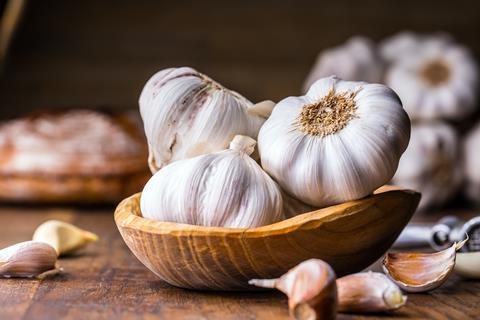The presence of garlic in early gilded artworks has been confirmed
Italian researchers say they have confirmed the presence of garlic in early gilded artworks.

Garlic has reportedly been used in works of art for centuries, not for scratch-and-sniff pictures, but as a glue to attach gildings of silver, tin and gold to the surfaces of paintings, picture frames, manuscripts and furniture. Many historical treatises describe this application but its occurrence had never been confirmed chemically.
The characteristic volatile compounds of garlic have long since disappeared from old paintings, so Maria Perla Colombini and colleagues from the University of Pisa turned to the proteins in garlic as indicators of its presence in works of art.
Proteins were extracted from gilding, subjected to microwave-assisted acidic hydrolysis and broken down into constituent amino acids. These were then converted to silyl derivatives for analysis by gas chromatography-mass spectrometry.
Initial experiments were conducted on a mixture of fresh garlic juice with white lead and bole (a mixture of clay and glue), typical ingredients of the so-called sizing mixtures used to attach gold leaf to tiles. Some gilded samples were subjected to thermal ageing to simulate the natural ageing process.
The most abundant components were glutamic acid, aspartic acid and serine. The contents of all 14 amino acids detected were unaffected by the geographic origin of the garlic or by ageing, even though protein denaturation and conformational changes will have occurred.

The contents were also significantly different from those of animal glue and egg proteins, other common media used to bind gold leaf. A principal components analysis showed clear differentiation between the three groups.
The technique was applied to 15 gilded Italian murals and one gilded canvas painting from the 13th-17th centuries. Garlic was identified in five of the gildings, either on its own or in mixtures with animal glue.
’The availability of representative samples is a difficult step: co-operation with historians and conservators is fundamental,’ Colombini told Chemistry World, ’but the small sample size [less that 5 mg] ensures no significant damage to the works of art.’
References
Ilaria Bonaduce, Maria Perla Colombini, Stéphane Diring, J. Chromatogr. A, 2006 (DOI: 10.1016/j.chroma.2005.12.053)












No comments yet